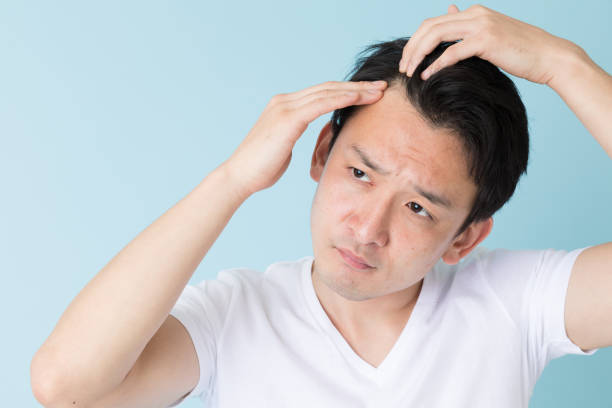Male hair loss is a topic many of us have on our minds. You might notice a receding hairline or thinning at the crown and start wondering what’s happening.
The truth is, up to half of men experience some degree of male-pattern baldness by the age of 50. This common issue stems from an increase in dihydrotestosterone (DHT), a potent form of testosterone. When DHT levels rise in the scalp, it initiates a process that shrinks hair follicles, leading to finer, less noticeable hair. This predictable pattern of hair loss starts at the temples and then targets the crown, which is why it’s often referred to as male-pattern baldness.
Understanding the Root Causes

Image from iStock
To understand male hair loss, you need to look at the role of DHT. This hormone, which converts from testosterone, is more prevalent in some men due to genetic factors. It’s not just about having more DHT but how your hair follicles react to it. Some follicles are more sensitive to DHT, causing them to miniaturise and produce thinner hair. Over time, these follicles can stop producing hair altogether, resulting in the bald patches many men dread.
Genetics and Hormonal Influences
Genetics play a significant role in how your hair responds to DHT. If your father or grandfather experienced baldness, you might have a higher chance of facing it too. However, genetics isn’t the sole factor. Hormonal changes and how your body processes testosterone can also influence hair loss.
How to Treat and Prevent Male Hair Loss

Image from iStock
If you’re concerned about male hair loss, the first step is seeking professional advice. Dermatologists who specialise in hair loss can offer guidance on the most effective treatments. Don’t wait until your hairline has noticeably receded—early intervention is key. The sooner you start, the better your chances of keeping the hair you have.
Medications: The First Line of Defence
Two widely recommended treatments for male hair loss are minoxidil and finasteride.
Minoxidil is well-known for its hair-regrowth properties. Available as a foam or drops, it needs to be applied to the scalp at least once a day. It encourages hair follicles to produce thicker hair over time. However, minoxidil requires consistent application, and stopping it can reverse any gains.
Finasteride, on the other hand, is taken orally and helps maintain or improve hair coverage. It works by reducing the levels of DHT in your scalp, thus slowing the process of hair loss. Though effective, finasteride can have side effects like erectile dysfunction, which generally resolve once the medication is discontinued. It’s also available as a topical solution, though this form isn’t FDA-approved and should be used with caution.
Combining both treatments can often yield better results. Minoxidil and finasteride tackle hair loss through different mechanisms, and using them together can provide a more comprehensive approach to managing hair loss.
Exploring Secondary Therapies
1. Platelet-Rich Plasma (PRP) Injections
PRP therapy involves drawing your blood, separating the plasma, and injecting it back into your scalp. This treatment is designed to stimulate hair growth and is usually done over several sessions. While PRP shows potential, it’s costly and best used alongside primary treatments like minoxidil and finasteride.
2. Low-Level Laser Therapy
Low-level laser therapy, available in devices like helmets or combs, uses light to stimulate hair growth. Though it can be expensive, some men find it a useful addition to their treatment regimen. It’s important to choose legitimate devices and combine them with other therapies for the best results.
The Gold Standard: Hair Transplants
Hair transplants offer a more permanent solution for male hair loss. This procedure involves moving hair follicles from one part of the scalp to areas where hair is thinning. Although hair transplants have come a long way since the days of hair plugs, they are still expensive and require ongoing medication to maintain results. Costs can start around $7,000 and increase significantly based on the extent of the procedure.
Busting Myths and Avoiding Scams
The world of male hair loss is full of myths and misinformation. Wearing hats, washing your hair too much or too little, and even sunburning your scalp won’t affect hair loss. Home remedies like onion or garlic are ineffective and can irritate your scalp. While treatments like rosemary oil might seem promising due to social media trends, the evidence supporting their effectiveness is weak.
Takeaway
Male hair loss can be a challenging experience, but it’s manageable with the right approach. Start by consulting a dermatologist to discuss your options. Whether you opt for medications like minoxidil and finasteride, secondary therapies, or even hair transplants, there’s a solution that can help. Remember, early intervention is crucial, and combining treatments often provides the best results. Don’t let male hair loss control your life—take action and explore the treatments that can keep your hair looking its best.
ALSO READ:
Common Health Conditions Affecting Men
Hairstyle Mistakes That Are Making You Look Older
9 Innocent Things That Could Be Signs Of Health Problems